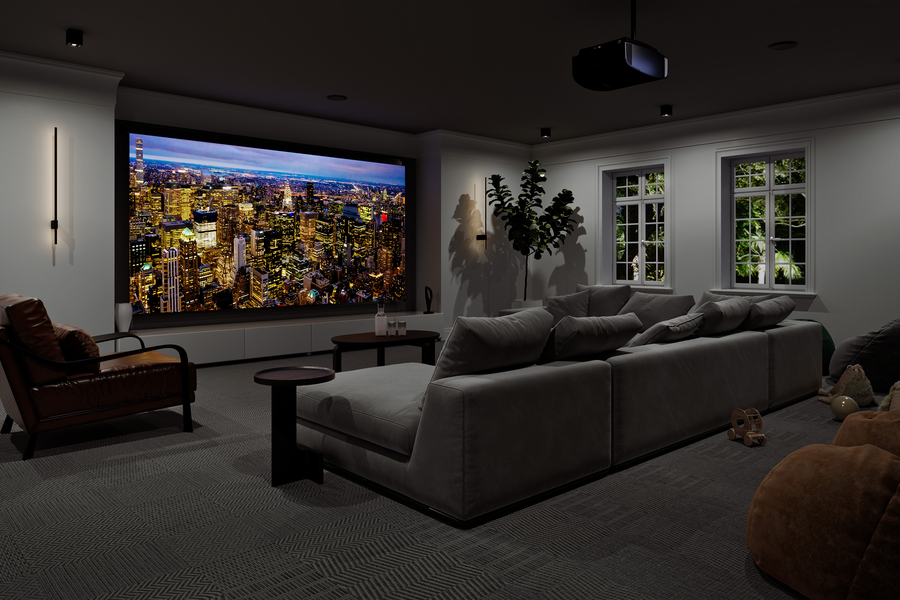How We Build State-of-the-Art Home Cinemas
Have you ever walked out of a movie theater and felt like you were still living inside a film? Suddenly every moment feels significant, from conversations in the car to the songs you hear on the radio.
Why doesn’t that happen when you watch a movie on a regular TV? Well, without a display that consumes your field of vision and without surround sound, you won’t experience true immersion.
If you’re looking for more immersive entertainment, it sounds like you’re ready for a home theater system. But what equipment do you need?
As audio-video professionals, we design and install private cinemas in homes across Denver, CO. In our experience, here’s what all home theaters need for the best results.
SEE ALSO: The Beauty of Hidden Media Room Speakers
1. Loudspeakers
You can’t rely on built-in TV speakers or a soundbar if you want to feel like you’re amidst a movie’s action. For true surround sound, you’ll need a series of at least five loudspeakers. We typically advise using a center channel speaker below or behind the screen, two speakers at the front of the room, and two beside the viewers. For extra depth, add speakers to the rear and ceiling to create a ‘dome’ of audio.
2. Subwoofer
Whether you’re listening to a rock biopic or rumbling action scenes, if you wantto add that extra ‘oomph’ to your audio, you’ll need a subwoofer in the surround sound system. Subwoofers provide the low bass notes that regular speakers can’t replicate.
3. Receiver/Amplifier
The receiver or amplifier works like the brain of a surround sound system, sending audio signals from the media source to the speakers. Receivers and amplifiers work the same; the only difference is that receivers include a radio signal.
4. TV or Projector System
Now it’s time for video. Projectors have come a long way in recent years, with 4K definition and dynamic HDR enhancers. Laser projectors produce an ultra-bright image that won’t look dull or faded, and ambient light rejection (ALR) screens enhance color and brightness.
Projectors used to be the only realistic option for larger-than-life visuals, but today 4K TVs are reaching wider dimensions than ever, up to 100 inches or more!
5. Cabling
Cables may not be the most exciting part of a home theater, but they’re essential. You’ll likely need speaker wires, HDMI cables, coaxial video cables, and data wiring if you include smart control.
6. Media Sources
Most homeowners today stream content on platforms like Netflix, Hulu, and Prime Video. But if you’d like to watch 4K content with Dolby Atmos, there’s still value to using Blu-rays for the highest quality without relying on Wi-Fi. Media servers like Kaleidescape store hundreds of 4K and HD movies that you can watch in any room without depending on streaming services.
7. Seating
What’s a home theater without ultra-comfy seating? Consider the type of seating you’d like to use—modern recliners, classic theater seats, or sectionals. It’s an extra step, but having the floor elevated provides better viewing angles for more seats and creates a true cinema experience.
8. Lighting & Shading
Set the perfect mood for a movie night with a single command. Smart lighting and motorized shades can be synced to the rest of your home technology through a smart system. A setting called “Theater” or “Movie Night” can slowly dim overhead lights while illuminating small pathway lights to see. Simultaneously, window shades automatically close, so your visuals look bright and clear.
You don’t have to install your home theater alone. In fact, why not leave it to the professionals? Contact Electronic Integration to learn more about our home theater services today.


